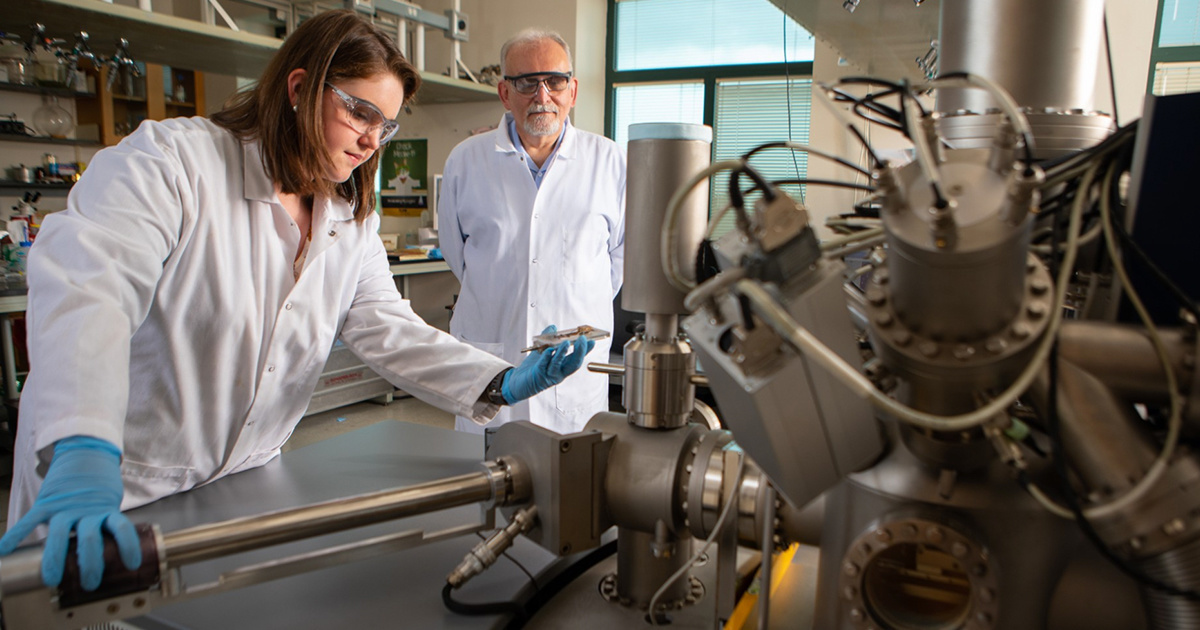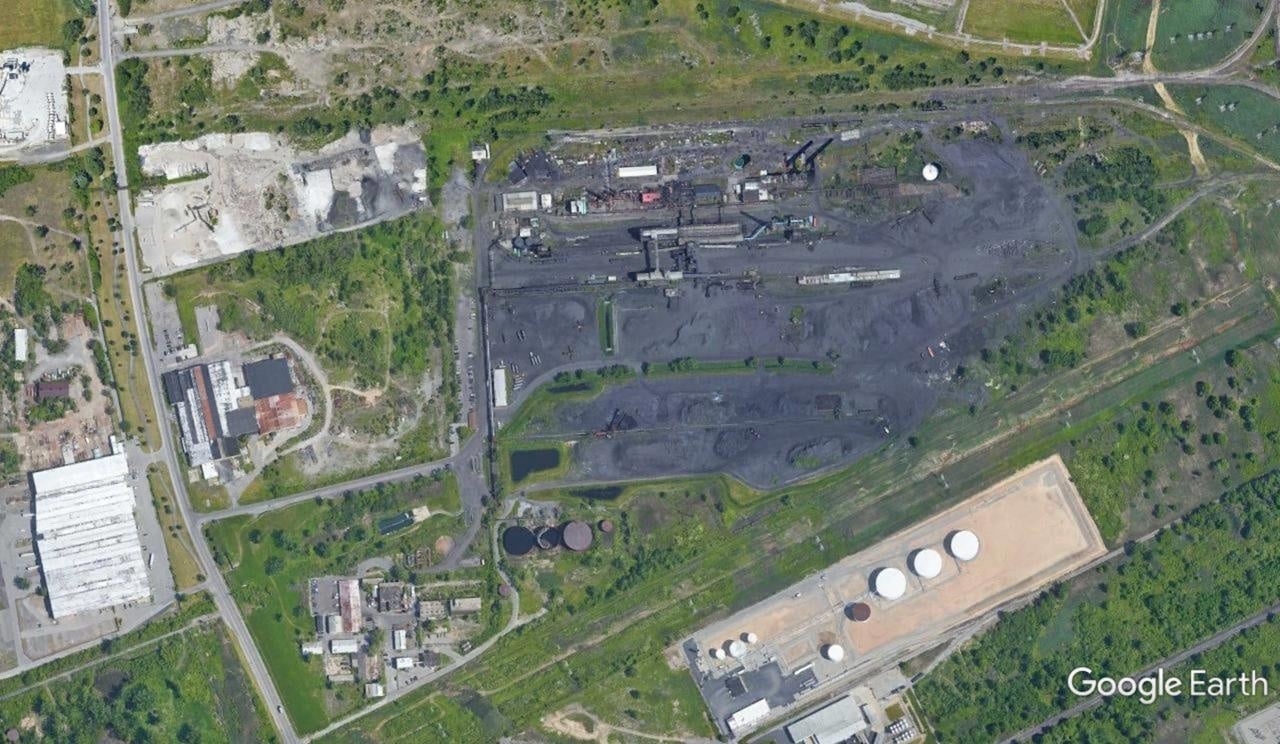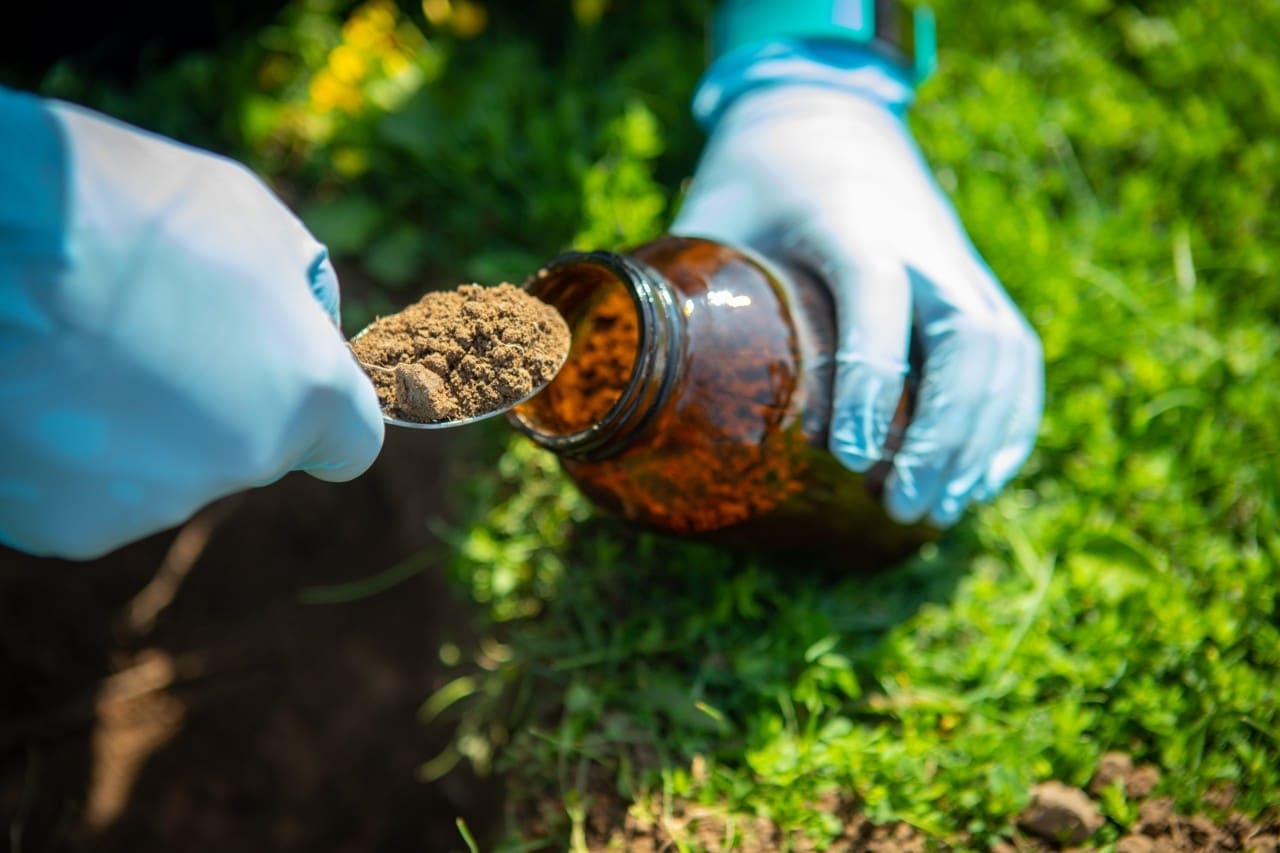
How Citizen Scientists Could Help Rescue Public Health From Polluters

University at Buffalo PhD candidate Kaitlin Ordiway (left) prepares to run a sample in a secondary ion mass spectrometer. UB chemistry professor Joseph Gardella (right) is leading the Tonawanda Coke soil study. Douglas Levere / University at Buffalo
By Erica Cirino
In the early 2000s, residents of a small, Rust Belt city called Tonawanda, New York, began noticing something strange: Over the years, it seemed, an increasing number of people were getting sick — primarily with cancer.
Tonawanda’s a highly industrial city with more than 50 polluting facilities situated within a three-mile radius. It was common for the air to feel dense and to smell like gasoline. Residents wondered what toxic chemicals might be in the air and if they were making them sick.
Seeking to answer that question, in 2005 a small group of concerned residents took to their streets armed with five-gallon buckets, plastic baggies, plastic hoses and a handheld vacuum to suck out samples from the heavy, foul-smelling air.
Lab testing confirmed their fears: Air samples they’d taken near a plant called Tonawanda Coke, which produced a high-carbon form of coal, contained extremely high levels of industrial toxins, including benzene — a hydrocarbon linked to cancers, infertility, growth problems and an array of blood diseases. It was present in the air at a rate of 25 times what the federal government estimates an average American is exposed to in a lifetime.
The group’s work resulted in a legal investigation, a federal lawsuit and the eventual shutdown of Tonawanda Coke in 2018. It was a major victory spurred by a small, DIY investigation. But the success didn’t end there. It led to a first-of-its-kind “chemical fingerprinting” study that could have far-reaching impacts to hold polluters accountable and even prevent towns like Tonawanda from becoming toxic dumping grounds in the future.

The Tonawanda Coke plant in Tonawanda, NY.
EPA / Google Earth
Bottom-Up Research
In 2013 a judge found Tonawanda Coke guilty of violating 11 counts of the Clean Air Act and three counts of the Resource Conservation and Recovery Act. The company was ordered in 2014 to pay a .5 million penalty plus .2 million for community health and environmental research that could reveal the full extent of the factory’s pollution legacy — the first time in history such a legal decision has ever been made.
Today the environmental component of that court-ordered research — a 1,000 soil project that involves testing for specific chemical signatures in soil to map areas that have been exposed to the highest levels of air pollution — is in its final phase, with its results to be made public later this year.
Residents will then learn the extent of the pollution in the region caused by the coke plant. But much has already been accomplished thanks to the continued work of local residents, who have assumed “citizen scientist” roles in collecting soil samples for study. While chemical fingerprinting has been done before to find polluters, this is the first federally court-ordered project funded by a convicted party and designed by local scientists to uncover the extent of an industrial polluter’s impacts on its community by testing chemical fingerprints with the help of citizen scientists.
Experts believe this kind of community-driven project is a cost-effective way to understand long-term pollution legacies from companies like Tonawanda Coke and also to identify additional polluted areas that need to be cleaned up.
“Soil sampling is a surrogate for historic air pollution, especially for the most carcinogenic compounds emitted by industrial plants,” said Joseph Gardella Jr., State University of New York at Buffalo chemistry professor and research leader. “Many pollutants in the air end up depositing themselves in soil, providing us with a record of what factories have historically been pouring out, what people have been breathing in and what needs to be cleaned up now.”
Fingerprinting Polluters
The scientific process of developing a specific chemical fingerprint and tracing it back to a specific source, in this case Tonawanda Coke, is known as “source apportionment.” Each factory releases its own specific mixture of pollutants. They perform some kind of combustion process or processes, and so they release chemicals specific to those processes belonging to a class of cancer-causing chemicals called polycyclic aromatic hydrocarbons (PAHs).
Burning cigarettes, running vehicles, cooking on a charcoal grill and making a bonfire also releases PAHs — albeit in much smaller amounts. Different types of combustion — including the production of coke, which comes from heating coal at high temperatures — release different types of PAHs and other associated health-harming chemicals, such as particulate matter, sulfur and carbon dioxide.

A soil sample is taken in 2018 to test for pollutants.
Douglas Levere / University at Buffalo
In 2017, while Tonawanda Coke was still running some of its coke ovens, Gardella and his team took air and soil samples on site, as well as a sample of the coke the plant produced, to gather data that could be used to develop a chemical fingerprint unique to the factory. Then they held community meetings where they called on the public for help collecting soil samples from their properties and taught them how to collect samples that could be used for scientific analysis.
In total residents collected 182 soil samples, and Gardella’s team also analyzed public data on contaminants from 65 toxic release sites in their test area in northwestern Erie County, New York. The scientists sent both the air and soil samples to independent laboratory ALS Environmental to be analyzed for 169 different industrial chemicals. The results?
“On the Tonawanda Coke property, soil samples had levels of PAHs that were through the roof,” said Gardella. “I had never seen anything this contaminated before, and I’ve seen some pretty contaminated sites.”
Analysis of the resident-collected soil samples also revealed high levels of pollution, specifically on properties immediately surrounding the plant; as well as properties east, northeast and west of the plant. Chemicals found in soil samples included PAHs, PCBs, cyanide and heavy metals such as lead, mercury and arsenic. Some of the residential samples in the worst polluted areas had levels of toxic chemicals that exceeded federal and state guidelines that would necessitate a cleanup.
Mapping the Risks
Understanding the kind of pollutants in the area was just the first step. Next, to understand whether or not the pollutants on residential properties definitely came from Tonawanda Coke and not another industrial polluter, researchers need to do more testing. In 2018 the scientists asked residents to take 130 more samples within the most highly polluted areas and began the process of determining source apportionment — matching the chemical fingerprint.
“I am currently building a library of chemical standards from pollutants found on the Tonawanda Coke property so I know what chemicals we are looking for and what its unique chemical fingerprint should look like,” said Kaitlin Ordiway, a State University of New York at Buffalo graduate student now working on the source apportionment component of the study.
Because Tonawanda was the only coke plant in this highly industrial area of New York, Ordiway says she’s using advanced chemical tests to look specifically for PAHs associated with coke production. These include anthracene, phenanthrene, benzo(a)pyrene and benzo(g,h,i)perylene. PAHs are more complex versions of one of the simplest aromatic hydrocarbons, benzene, a very common — and toxic —emission from industries of all kinds.

“The PAHs I’m looking for have a more complex molecular structure than benzene, and so they can be used to develop a more detailed and accurate fingerprint,” Ordiway said.
Chemical fingerprinting and the methods used by the University at Buffalo team have been widely used to uncover sources of industrial pollution, according to Paul Boehm, corporate vice president and principal scientist at Exponent, an engineering and scientific consulting firm. This includes cases for all kinds of pollution, he says, such as from the Deepwater Horizon and Exxon Valdez oil spills.
He adds that “what makes or breaks such investigations” includes the quantity and quality of samples used to establish the fingerprints, considerations of all other possible chemical sources in the area including natural “background” levels of PAHs, the techniques used to analyze the data, and most importantly, the experience and skills of the scientists who are analyzing and interpreting the data.
Gardella and his team say that, after their fingerprinting process is finished, they’ll use GIS technology to develop contamination maps with their data that will inform environmental agencies about the exact location of various contaminants. Specifically, they’ll determine where a cleanup of toxic soil might be necessary and whether or not Tonawanda Coke is responsible for it or if another polluter is to blame and should be investigated. Gardella says he and his team expect to announce the results in later 2019.
Chemical fingerprinting research and map-making can be time consuming, Gardella says, but when citizen scientists are used to help gather data, it’s not very expensive. He believes the process should be used routinely by state and federal environmental agencies to identify polluters and polluted areas instead of waiting for a court order, as in the case of Tonawanda. Because the technology to perform source apportionment already exists and the testing methods are relatively inexpensive, environmental agencies just have to develop the capacity and training to carry it out, he says.
“When that happens, this could become proactive work rather than retrospective work, resulting in better pollution monitoring across the country and healthier lives for people living in areas affected by industrial pollution,” Gardella said.
Reposted with permission from our media associate The Revelator.
- 7 Outdoor Citizen Science Projects to Join This Summer - EcoWatch
- Citizen Scientists Are Filling Research Gaps Created by the Pandemic - EcoWatch

 233k
233k  41k
41k  Subscribe
Subscribe 